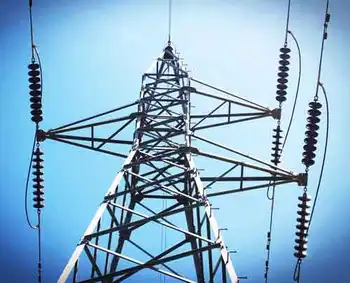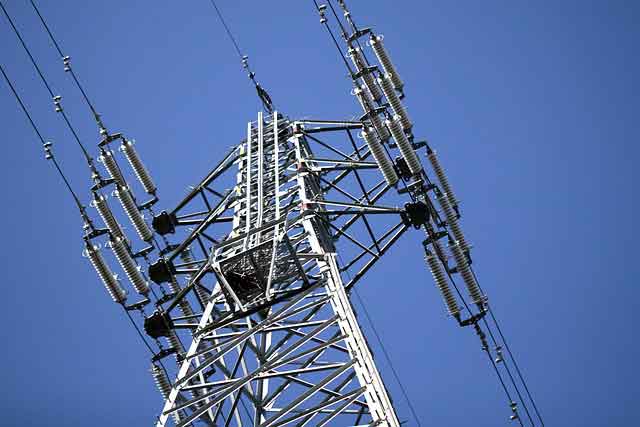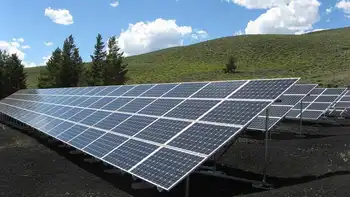A dying industry turns to the Volt
By Toronto Star
Arc Flash Training CSA Z462 - Electrical Safety Essentials
Our customized live online or in‑person group training can be delivered to your staff at your location.

- Live Online
- 6 hours Instructor-led
- Group Training Available
On one hand, it's revving up the Volt, a car that vaults it up the green technology curve and creates the impression the century-old corporation has mended its dinosaur ways.
On the other, its chief executive goes to Washington to plead for a bailout and is lambasted for not having a clue what to do with the cash and – the perfect metaphor for having his head stuck deep in another era – zipping in on his private jet. Ditto for Ford and Chrysler.
To be fair, no one in those crowded hearing rooms seemed to know what a viable plan would look like, except that it might require one of the Big Three to join Studebaker and Hudson in history's car crusher. Nothing contemplated would restore the industry to its dominant place in North America's economy. That's likely gone for good, since the domestic manufacturers already produce far more cars than consumers need and face a flood of lower-cost competitors from China.
Which brings us back to the four-seat Volt, which takes combined electric and gasoline propulsion a big leap beyond hybrids. The project is deemed so important it has, so far, survived the meltdown that's forced GM to unplug other development programs.
"At this stage, it's isolated from any challenges we face," says spokesperson Rob Peterson. The development timetable hasn't changed, nor has the November 2010 deadline for hitting showrooms.
The Volt is GM's "moon shot," vice-chairman Bob Lutz said in a recent published interview. Failure wouldn't kill the company, but success would "be sensational and... have the same sort of symbolism" as Neil Armstrong's giant leap for mankind nearly 40 years ago.
The new car is, in fact, all about image. The first production run is to total a minuscule 10,000 vehicles, not even a smudge on the bottom line.
If the technology succeeds it might appear in additional models. But for now, the Volt is all about the star of the 2006 movie Who Killed the Electric Car? trying to demonstrate it's seen the light.
In terms of public perception, the Volt is a smash. It dominates talk of environmentally friendlier cars, and boasts several websites, with interminable blogs. An unofficial customer waiting list includes 45,000 names. The car is a rallying point for those who, as Volt.com puts it, want to "help to empower and advance the impending electric car revolution."
Even so, it's no sure bet. It still faces technical hurdles and consumer resistance. The Volt will be relatively expensive: Its forecast price is approaching $40,000, $10,000 above the original target.
"North Americans have not been willing to pay for fuel efficiency – that's a very robust finding in many studies," says Johannes Van Biesebroeck, an economist at the University of Toronto. And with major purchases: "If you change radically from an earlier design, expect take-up to be very slow."
It's proceeding only because of aid from Washington – a $7,500 per car consumer rebate and a share of a $25 billion advanced technology fund. Both – separate from the current quest for a bailout – were approved last month. In return, the car will be built in Michigan. (Ontario has no role.)
Most important, even if the concept catches on, the Volt faces stiff competition. While it grabs attention, other carmakers are developing their own electric vehicles. Several were unveiled this week at the Los Angeles Auto Show. Nissan and Chrysler say theirs will go on sale around the same time the Volt is seeking customers.
All of this makes the Volt a complex part of any GM survival plan. It's useful, for the bailout negotiations, as a way to argue the corporation has a vision. It says nothing about reorganizing production of the remaining GM models or dealing with overcapacity, and it's irrelevant as a means to escape the economic crisis. Indeed, bankruptcy might propel it along; letting GM ditch aging plants and expensive union contracts.
Beyond the corporate machinations, though, the Volt suggests a bigger story. The auto industry is acting as if success now flows from reducing consumption of fossil fuels.
Even zero-emission vehicles would impact the environment – think expressways and sprawl. Making cars will still require enormous amounts of electricity. So will recharging. Still, as long as we remain besotted by our wheels, accelerating new technology is far better than racing to produce the biggest, most gas-guzzling SUV.











